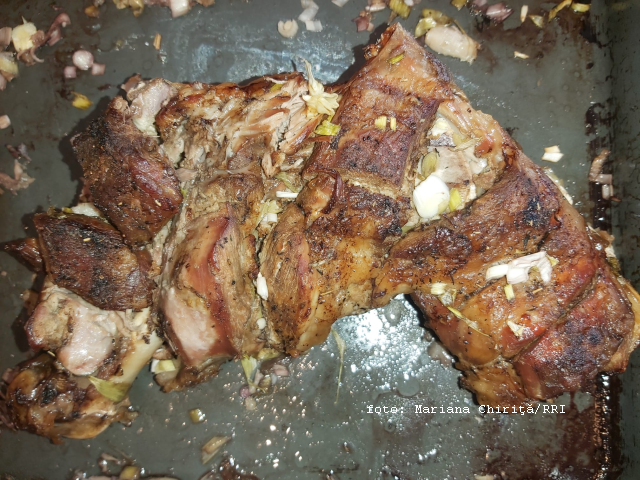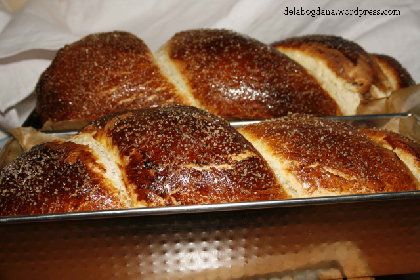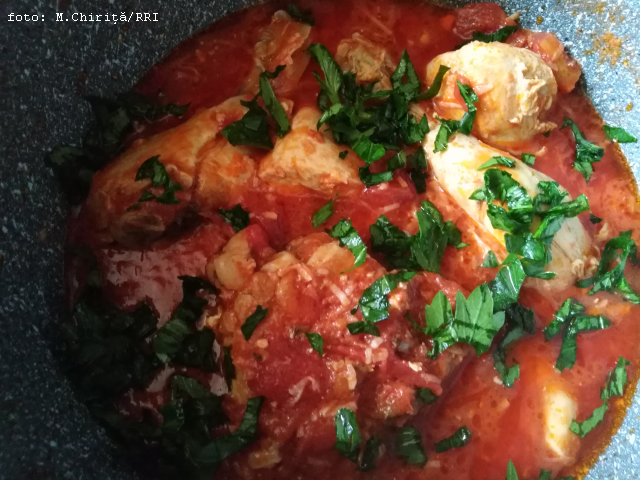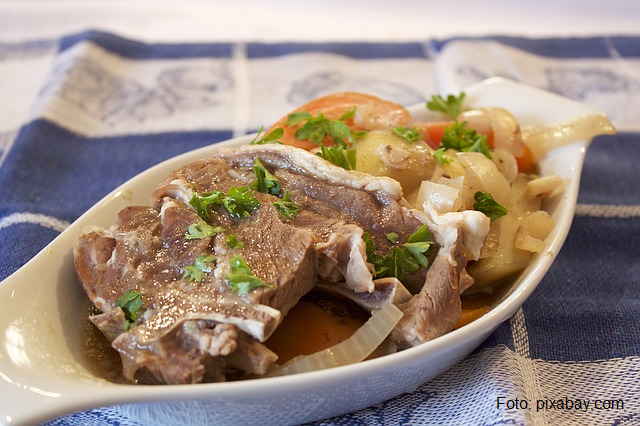Food from Buzau county
The mouth-watering Plescoi sausages
Warning: Trying to access array offset on null in /home/web/rri.ro/public/wp-content/themes/rri/template-parts/content.php on line 53

Warning: Trying to access array offset on null in /home/web/rri.ro/public/wp-content/themes/rri/template-parts/content.php on line 98
Ștefan Baciu,
26.01.2020, 12:00
The county of Buzau stands out thanks to a couple
of staple dishes bearing the name of the county. Each of the products came to
be known mainly due to the fairs held in this south-eastern region of Romania,
a genuine trade hub, bordering, on three sides, the great Romanian historical
principalities: Wallachia, Moldavia and Transylvania.
There are the Buzau pretzels, the
small ones, with a diameter of 7 or 8 centimeters, sold on the string and hanging
on the baker’s door. They are made with leavened dough and are traditionally
baked in proving ovens. It appears the pretzels were first brought to Romania
around 1800, by the Greek merchants who settled in Buzau. The pretzels usually
went with the drinks that were ordered in pubs.
Buzau is also famous for its
sausages, for which they are two main sorts, the Buzau babic and the Plescoi
sausages. Similar products based on minced meat have surely been prepared
elsewhere around the country. However, the Plescoi sausages came to be known
thanks to the fairs held in Buzau. The best-known such fair was the Midsummer
fair held in June on the day the Dragaica was celebrated according to
tradition. Early 19th century documents make mention of the prices
for which the mutton pastrami and the sausages were sold, brought from the
villages of Berca and Plescoi. Initially, the hatchet-chopped mutton was used
to prepare the Plescoi sausages. The mutton was mixed with lamb suet and spiced
with garlic, thyme and basil. The mix was then squeezed into thin sheep
intestines. The sausages were then smoked.
Later, a little bit of beef was added to the recipe.
In late 18th century,
Bulgarian and Serbian nationals took refuge in the region of Buzau, because of
the Russian-Turkish war. With them, they brought a different recipe for the
preparation of sausages. In the region of Buzau, the Serbs continued to do what
they were best at and founded the so-called sarbarii, the Serbian vegetables
gardens. The Serbs had a penchant for using red chili peppers as a spicer,
which changed the preparation recipe for
the Plescoi sausages. It seems that the Buzau babic or the Buzau Serbian babic
appeared at that time. Mutton was no longer used for their preparation.
Hatchet-chopped pork was used instead, in stark contrast with the Ottoman
recipe, for which mutton was used.
For the preparation of the babic,
the recipe was quite similar to the preparation of mutton sausages. The pork,
usually gammon, is minced with the hatchet. Then salt is added, while the meat
is spiced with hot chili pepper or sweet paprika powder. The resulting mix is
squeezed in larger intestines, and then the sausages are formed. The sausages
are aired before they are smoked. In the end, the sausages are pressed into a
flat shape and then they are hung to dry. The recipe was changed so that the
drying process could become shorter, with beef also used for the mix. In the
region of Buzau, a babic-based thick soup is prepared, with lots of vegetables
and sausage slices, finely-cut.






























